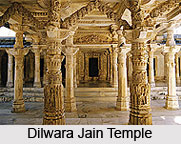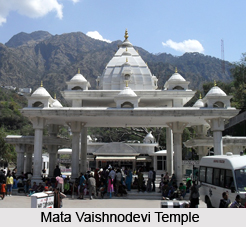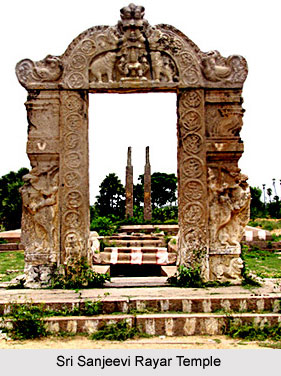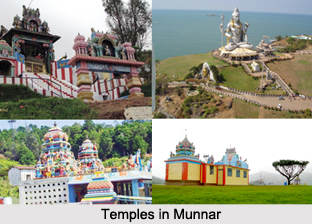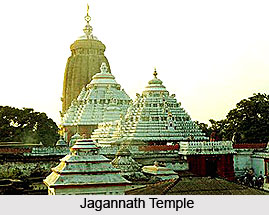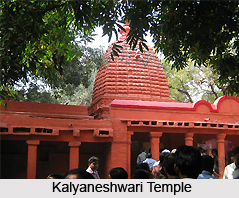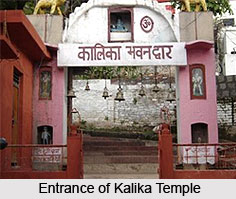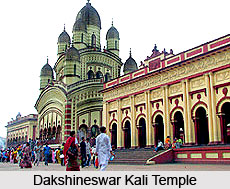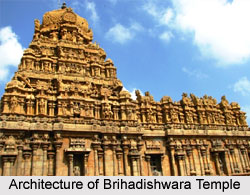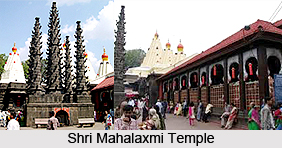 Shri Mahalakshmi Temple of Kolhapur is one of the Shakti Peethas, listed in numerous Puranas of Hinduism. According to these writings, a shakti peetha is a place associated with Shakti, the Goddess of Power. The novelty of Kolhapur peetha is that, being one of the six places where `peetha` is found, it is believed that one can attain salvation from one`s desires or have them entirely fulfilled, if he/she is religious enough.
Shri Mahalakshmi Temple of Kolhapur is one of the Shakti Peethas, listed in numerous Puranas of Hinduism. According to these writings, a shakti peetha is a place associated with Shakti, the Goddess of Power. The novelty of Kolhapur peetha is that, being one of the six places where `peetha` is found, it is believed that one can attain salvation from one`s desires or have them entirely fulfilled, if he/she is religious enough.
To start with, legendary stories finds place of association with this temple too. It is said that Lord Vishnu resides in the incarnation of Mahalakshmi at Kolhapur. Mahalakshmi annihilated Kolhasura, a demon that tormented the Gods and other beings here at Karavira, and the spot became a tirtha (holy place), so She took abode here, where the shrine stands today.
Although several parts of the temple are of the second half of the second millenium CE, epigraphic references place the deity in the 7th century CE, and the temple in the 10th century CE. For a period of time, in between, this temple had fallen out of worship and the image of the goddess was translocated somewhere else. Worship was restored in the year 1715 after the Marathas ascension to power.
The main entrance is through the West, or the `Mahadwara`. As one enters the Mahadwara one is confronted with several deepmalas (string of lights) on either side, and then moves on to the `Garuda mandap` with square pillars and widespread arches, typical characteristics of a Maratha construction. This mandap dates back to the 18th century. An image of Garuda faces the sanctum. Another stone mandap, on a raised platform enshrining Ganesh, also faces the sanctum. A mandap with three shrines facing west follows. The central one is that of Mahalakshmi, the other two being Mahakali and Mahasaraswati.
The temple complex showcases mortarless construction echoing teh style of the early Deccan temples. Noteworthy here are the horizontal mouldings and the vertical offsets, which create a rich silhouetted pattern. Figurines of dancing women, musicians, gods and goddesses heighten the effect of the Mahalakshmi Temple. The three sancta have rather plebian `shikharas` (apex) of brick and mortar, going back to the 19th century. The idol of Mahalakshmi is carved out of black stone and is three feet in height. The Shri Yantra is carved on one of the walls of the temple. The sanctum is adeptly carved in such a way that once a year the setting rays of the sun fall directly on the face of Mahalakshmi for a period of 3 days in the months of Pisces and Leo.
Above the Mahalakshmi shrine is a sanctum with a Shivalingam and a Nandi. The devakoshtas house `Venkatesha`, `Katyayani` and `Gowri Shankar`-facing the north, east and south. There are a number of additional shrines in the courtyard towards the Navagrahas, Surya, Mahishasuramardini, Vitthal-Rakhmai, Shiva, Vishnu, Tulja Bhavani and others. Some images are from the 11th century while some are from recent times. Also located in the courtyard is the temple tank `Manikarnika` Kund, on whose bank is a shrine of Visweshwar Mahadev.
The Mahalakshmi is worshipped five times throughout the day. The first one is at 5.00 AM, and it involves the waking of the deity with a Kakada-torch, accompanied by hymns. The second worship service at 8.00, involves the offering of `Shodashopachara` puja comprising 16 elements. The afternoon and evening services and the `Shejaarati` puja constitute the three other services. An intricately adorned image of the deity is taken out in procession around the temple courtyard each Friday and on full moon days.












